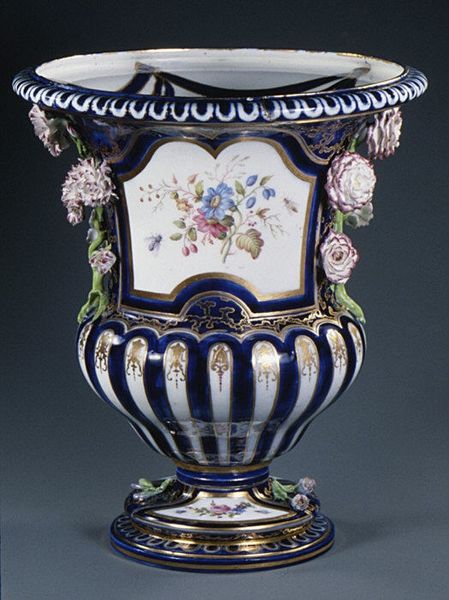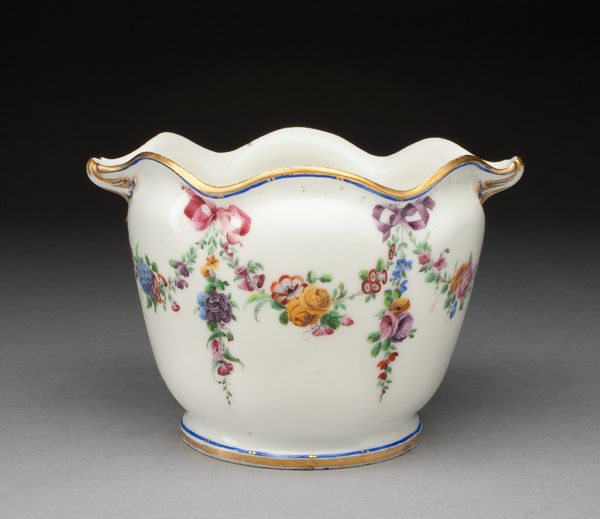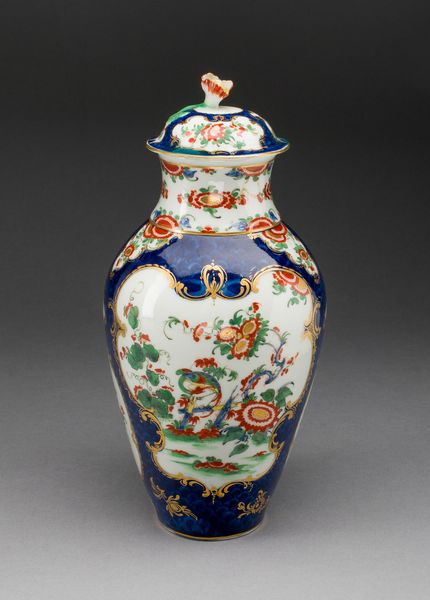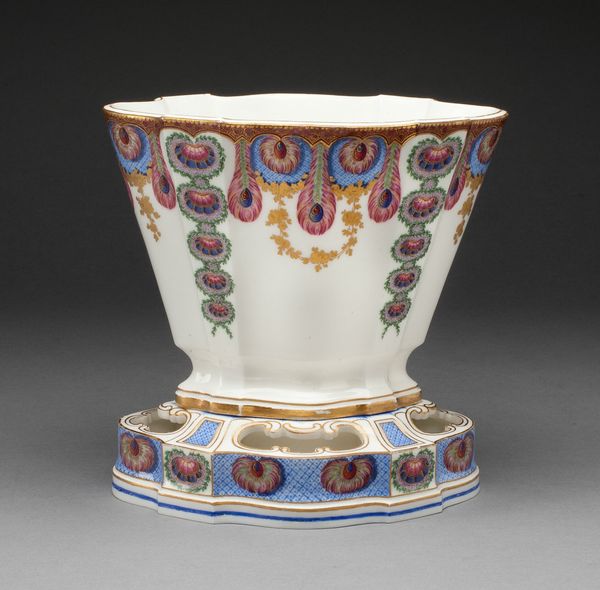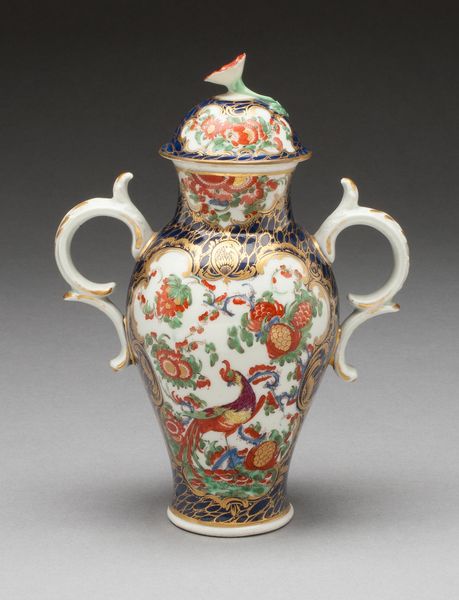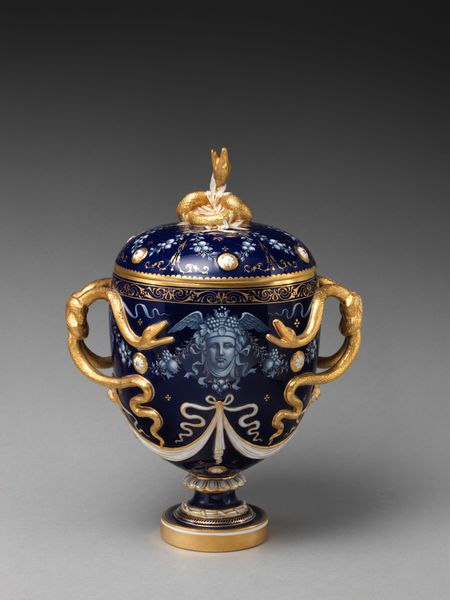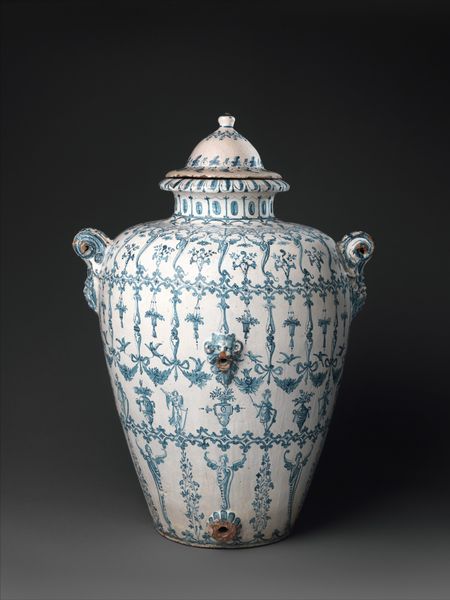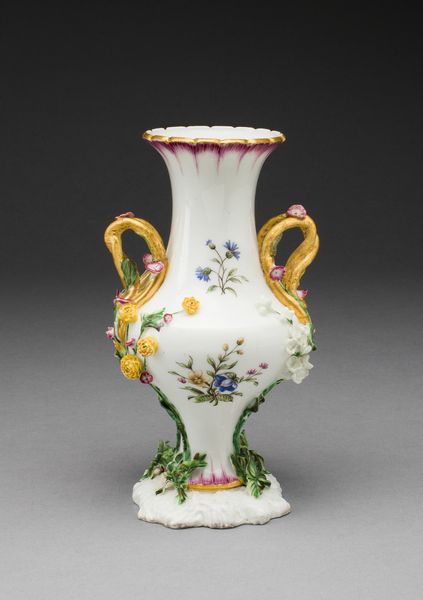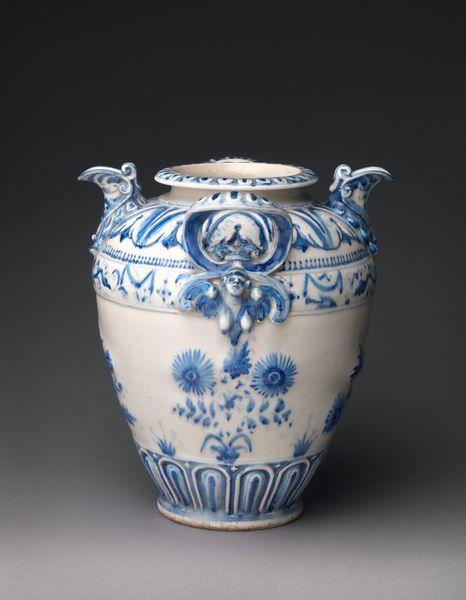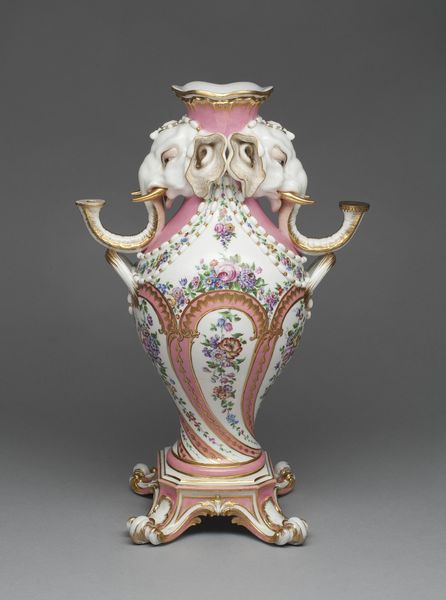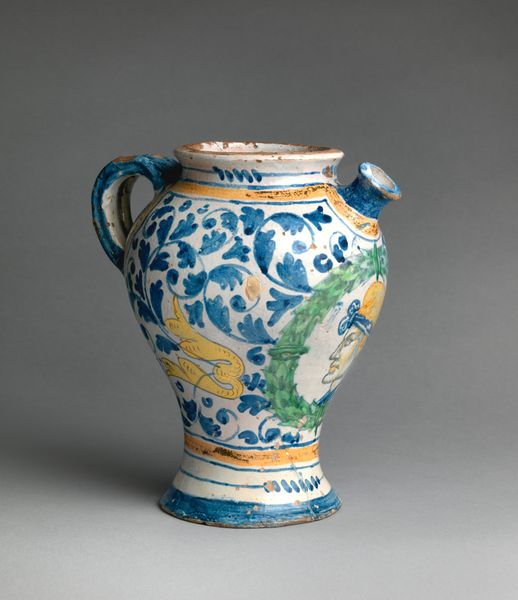
ceramic, porcelain
#
ceramic
#
porcelain
#
ceramic
#
decorative-art
#
rococo
Copyright: Public Domain
Editor: So, here we have "Vase à corset," created around 1755 by the Vincennes Porcelain Factory. The contrast between the bright blue and the floral design really stands out to me. What do you see in this piece? Curator: For me, it's about the labor embedded in this porcelain. Consider the mining of the clay, the shaping and firing processes, the intricate painting – each step dependent on skilled workers and a complex system of production. And let’s not forget the social context. This vase, while beautiful, speaks to the opulence enjoyed by a select few, built upon the labor of many. Does the Rococo style mask the production circumstances? Editor: I guess I hadn't considered that the elegance and beauty could be hiding a whole history of labor and resources. Is there a connection between the "corset" shape of the vase and the societal pressures on women during that time? Curator: Precisely! The object literally embodies constraint. Porcelain, as a highly valued material, represents control – control over resources, control over bodies. Note also how the decorative arts challenge the rigid hierarchy positioning painting and sculpture at the top. We have skilled labor producing this "minor" art that decorated aristocratic drawing rooms. Is there a form of subversion happening here? Editor: It’s fascinating how examining the materials and means of production opens up such a rich interpretation! Curator: Absolutely. Looking beyond the surface allows us to understand the social and economic structures embedded within this object. It’s more than just a vase; it's a product of its time. Editor: I'll definitely look at art with new eyes from now on. This was enlightening.
Comments
No comments
Be the first to comment and join the conversation on the ultimate creative platform.
